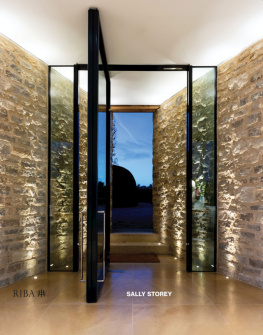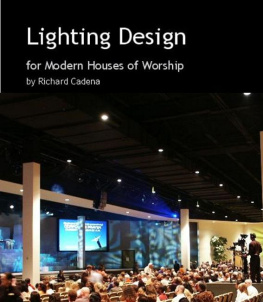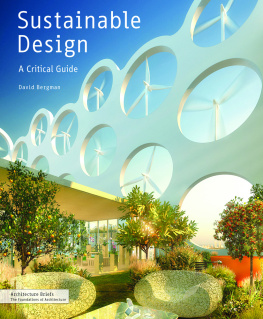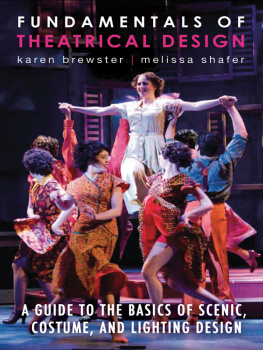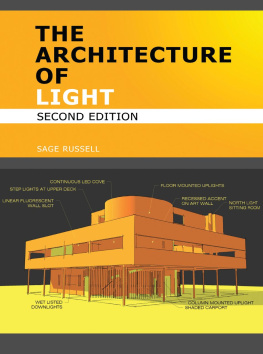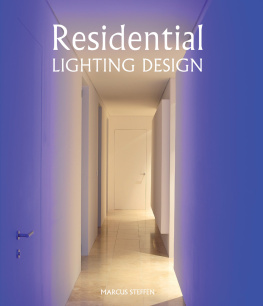Contents
Page List

Fundamentals of
ARCHITECTURAL
LIGHTING
The theme of this book is that light is an inseparable part of architectural design, and is intended to provide students of architecture and interior design with a graphic guideline to the fundamental role lighting plays in this process. While simple light sources may be enough to satisfy practical needs, the design process must expand beyond basic illumination. The challenge for architects and designers is the creation of luminous environments offering visual interest and a sense of well-being, while also meeting basic seeing needs. Technological advances provide opportunities for the lighting designers creative introduction of light, and the visual and psychological perceptions of the illuminated architectural environment.
FUNDAMENTALS OF ARCHITECTURAL LIGHTING offers a complete and comprehensive guide to the basics of lighting design, equipping students and practitioners with the tools and ideas they need to master a variety of lighting techniques. The book is extensively illustrated with over 250 illustrations to demonstrate basic principles and procedures. It is an excellent resource for anyone interested in the fundamentals of integrated lighting for architectural interior spaces.
SAMUEL MILLS is a retired architect and lighting designer with a career focused on the coordination of lighting and architecture With over forty years of experience with his own architectural firm, he also held the position of Director of Lighting for two large architectural firms. He was an Associate Professor of architecture at Kent State University, and an adjunct instructor at Oklahoma State University School of Architecture. His work experience includes graphic design, technical writing and illustration for architectural and lighting-related publications, as well as writing a monthly column for Architectural Lighting magazine.

First published 2018
by Routledge
2 Park Square, Milton Park, Abingdon, Oxon OX14 4RN
and by Routledge
711 Third Avenue, New York, NY 10017
Routledge is an imprint of the Taylor & Francis Group, an informa business
2018 Samuel M. Mills
The right of Samuel M. Mills to be identified as author of this work has been asserted by him in accordance with sections 77 and 78 of the Copyright, Designs and Patents Act 1988.
All rights reserved. No part of this book may be reprinted or reproduced or utilized in any form or by any electronic, mechanical, or other means, now known or hereafter invented, including photocopying and recording, or in any information storage or retrieval system, without permission in writing from the publishers.
Trademark notice: Product or corporate names may be trademarks or registered trademarks, and are used only for identification and explanation without intent to infringe.
Publishers Note
This book has been prepared from camera-ready copy provided by Samuel M. Mills
British Library Cataloguing-in-Publication Data
A catalogue record for this book is available from the British Library
Library of Congress Cataloging-in-Publication Data
A catalog record for this book has been requested
ISBN: 978-1-138-50675-6 (hbk)
ISBN: 978-1-138-50676-3 (pbk)
ISBN: 978-1-315-14700-0 (ebk)
Typeset in Arial MT Std Light & Myriad Pro
by Samuel M. Mills
During the past century architectural lighting has been influenced and guided by the field of illumination engineering through its scientific approach to furnishing adequate illumination for our working and casual seeing needs. Architects and interior designers relied on the illuminating engineer for lighting solutions partly due to its inherent complexity and their personal lack of knowledge. However, there has also been a growing interest in the consideration of other design parameters beyond merely providing adequate levels of lighting. As far back as 1938 Professor Stanley McCandless, of Yale University, published an extensive paper on the subject titled Lighting For Designers (meaning other than engineers). The following excerpt was extracted from this long, detailed paper because of its relevance to current lighting design practice, and its forward thinking and incisive discussion of the topic, and also appropriately, the theme of this book.
Practically all architects seem to agree that at night the lighting makes things fit and even dramatizes the design. There are also examples to indicate that lighting properly used is a great asset and promises to influence design far beyond its purely utilitarian aspects. From one point of view, lighting can be thought of as a structural material which is used in a building to help it serve various functions. Lighting has certain characteristics which determine its use and design like other materials, such as brick, steel, stone, and concrete. It should be designed by the architect as definitely as when he uses these materials. Unfortunately today (1938) it is common practice to treat interior lighting like furniture and decoration; lighting equipment that can be added after the building has been designed. If this point of view persists, lighting practice is bound to continue in the same channel. Difficult as it may be to visualize lighting as a structural element in architectural design, this consideration must eventually, also exist as a conviction in the mind of the designer.
This book is primarily intended to offer students and professionals interested in architectural interior lighting, a basic, graphically oriented, and detailed understanding of the important role lighting plays in architecture and interior design. A further intent is to stimulate the upcoming designers imagination and creativity with a presentation of lighting fundamentals to help find and develop new innovative solutions in melding lighting with the architecture, so occupants perceive the installed lighting systems, as an integral part of the interior space.
CONTENTS
Chapter 1
DISTRIBUTION OF LIGHT IN ARCHITECTURAL SPACE
INTRODUCTION
Chapter 2
THE LUMINOUS ENVIRONMENT
INTRODUCTION
Chapter 3
DESIGN OF THE LUMINOUS ENVIRONMENT
INTRODUCTION
Chapter 4
LIGHT & COLOR
INTRODUCTION
Chapter 5
LIGHTING QUALITY, COMFORT, & CONTROL
INTRODUCTION
Chapter 6
ILLUMINATION MEASUREMENT & CALCULATION
INTRODUCTION
Chapter 7
LIGHT SOURCES & COMPONENTS
INTRODUCTION
Chapter 8
LIGHTING APPLICATION & DETAILS
INTRODUCTION
Chapter 9
20TH-CENTURY ARCHITECTURAL LIGHTING PIONEERS
INTRODUCTION
Stanley McCandless
Abe Feder
Sylvan Shemitz
Richard Kelly
Derek Phillips
James Nuckolls
Wm. M.C. Lam
John Flynn
Howard Brandston
Jules Horton
Raymond Grenald
Good architectural lighting involves the successful evaluation of our human visual and psychological perception of space, where the lighting designer is somewhat more in control than the architect of our perceived environment. Lighting is a fundamental and visual element of architectural design and is critical to our everyday activities as visually oriented occupants of space especially architectural space.
When electric lighting became the dominant light source in our everyday environment, the selection of techniques and equipment posed a challenge to the creative judgment of the designer, and especially the lighting designer. This new challenge became more complex than the requirement for basic illumination.


